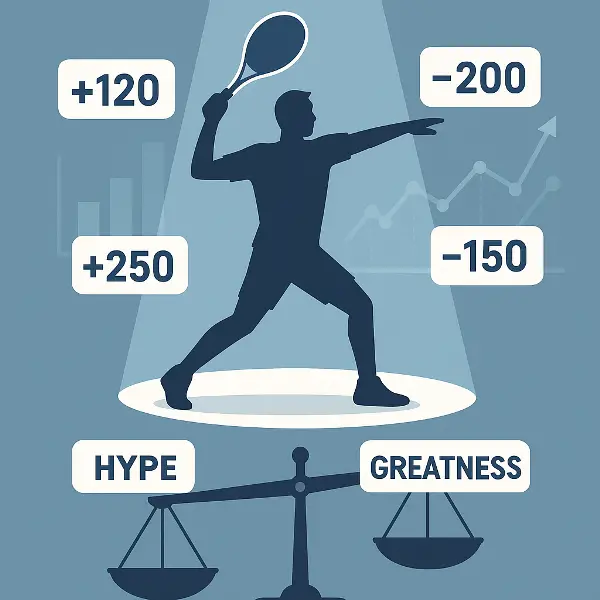Investigating whether consistent betting favoritism correlates with long-term player success
Sports betting is often seen as fun or a 22Bet gambling. But behind the numbers lies useful insight. Oddsmakers use data, models, and trends before setting lines. These odds aren’t random. They come from analysis—form, injuries, history, and more.
This brings up a key question: can betting odds show how good a player is? If someone is often a favorite, does it mean they’ll be successful long-term? By looking at how odds are made and what they show, we can explore if this favoritism points to greatness—or just hype.
How Odds Work: A Brief Primer
Odds show chances in betting terms. Bookmakers study many things:
- Recent form
- Strength of opponent
- Injury status
- Weather or conditions
- Past matchups
- Public opinion
They then create odds to do two things: reflect outcomes and balance betting. A player who’s often favored is expected to win more than lose.
But odds aren’t perfect predictions. They include profit margins and account for popularity. This makes it tricky to treat them as pure performance data.
Betting Odds as a Proxy for Expectations
Think of odds as a forecast, shaped by data and public bets. When players like Messi, Djokovic, or Mahomes are favorites often, it shows wide belief in their ability.
But expected wins aren’t guaranteed. A tennis player with 1.30 odds still loses sometimes. Still, over time, players who are regularly favored often turn out to be top-tier. Odds, while imperfect, can suggest lasting quality.
Evidence from Different Sports
Tennis
Tennis is ideal for testing this. Odds focus on individuals. Federer, Nadal, Serena, and Djokovic were almost always favorites. Their long careers and wins back this up.
Still, not all favorites become legends. Players like Zverev or Dimitrov often had favorable odds but never fully broke through. In these cases, the odds showed short-term form, not long-term greatness.
Football (Soccer)
In football, odds usually apply to teams. But bets like “anytime scorer” or “man of the match” give clues. Ronaldo and Messi were often top picks—and they delivered.
But bias creeps in. Some Premier League stars get short odds due to fame, not form. This shows how hype can distort value.
American Football and Basketball
In team sports, stars like quarterbacks or point guards get MVP odds. Brady, LeBron, and Curry were top picks often—and they lived up to it. But there are flops too. MVP favorites sometimes fail. Bookmakers respond fast to trends.
Correlation vs. Causation
Favoritism and success often go hand in hand, but one doesn’t cause the other. Odds reflect what’s already known—wins, stats, health, and leadership.
Still, being favored for years usually means you’re elite. When it doesn’t work out, it’s often due to:
- Overhyped prospects
- Short bursts of good form
- Popularity-driven bets
So, favoritism is useful, but it must be read carefully.
Read Also: UCL: Chelsea Showed Strong Mental Toughness Vs Benfica –Neto
The Psychology Factor
Bookmakers don’t just follow data—they predict public behavior. If fans love a player, odds shrink to protect the sportsbook. This is known as “favorite-longshot bias.” Favorites can be overpriced.
Take Floyd Mayweather. He was almost always a big favorite. His record backed it up. But the odds often offered little value. The key is that odds reflect belief, not just stats.
So, odds mix numbers with psychology.
What Betting Odds Miss
Odds capture a lot—but not everything. They miss:
- Career growth
- Injuries
- Long-term form
- Hard-to-measure roles
Take Kanté in football or Rodman in basketball. They rarely led the odds. But their value to teams was huge.
Case Study
Rafael Nadal vs. Betting Markets
Nadal’s career tells a full story. On clay, he was always the favorite. His 14 French Open wins prove the odds were right.
But early in his career, he was an underdog on hard courts. The market doubted him against Federer or Djokovic. Still, he adapted and won multiple hard-court majors. Bookmakers missed this evolution.
Odds, in the end, are snapshots—not full stories.
Toward a Balanced View
Betting odds aren’t perfect metrics. They’re shaped by stats, psychology, and public opinion. But over many years, they do help highlight consistent top performers.
When paired with stats, odds offer useful insights. Scouts, fans, and analysts can use them as another lens—not the final one.
Odds and Performance
The link between odds and performance is real—but not clean. In sports like tennis or boxing, consistent favoritism often matches long-term success. But there’s noise. Public hype, form, and bookmaker margins all blur the view.
Odds aren’t crystal balls. They’re barometers. They measure a mix of skill, hype, and trust. Players who are favorites year after year are usually great. But greatness also comes from grit, growth, and achievements that odds can’t price.
For those watching closely, odds are worth noting. Not as truth—but as a tool to help understand performance in sports.








